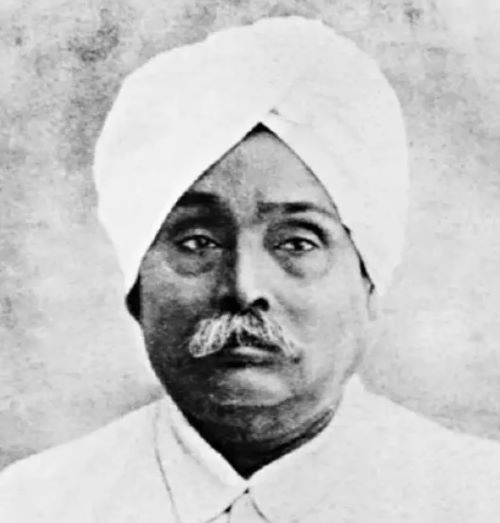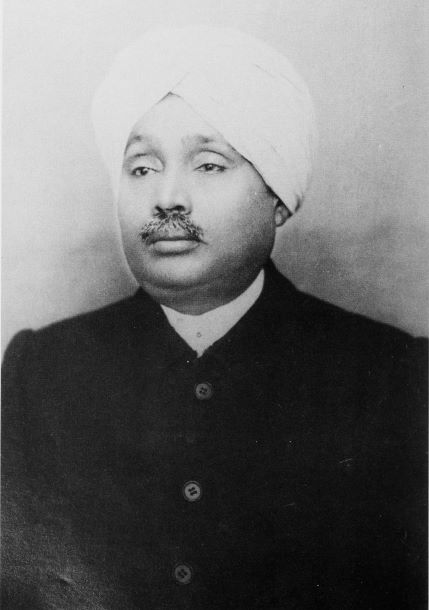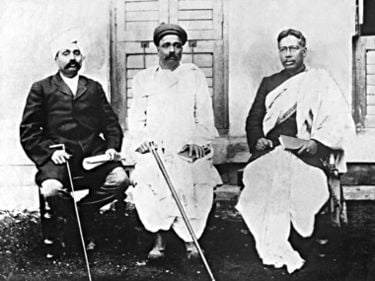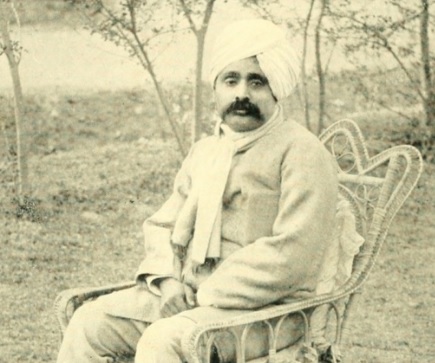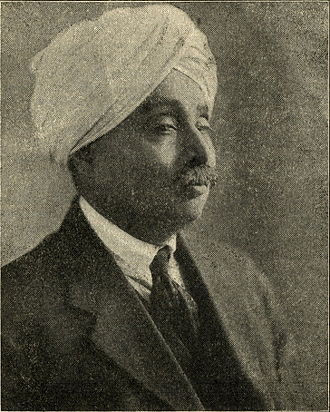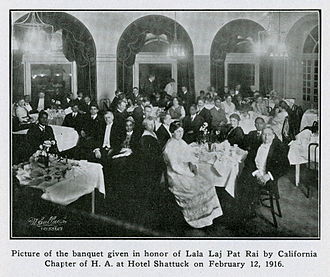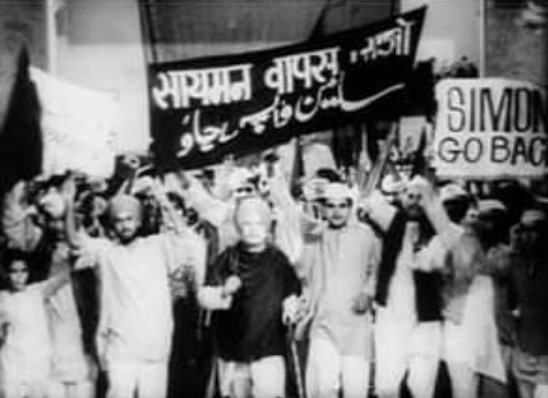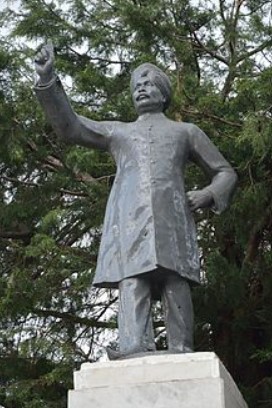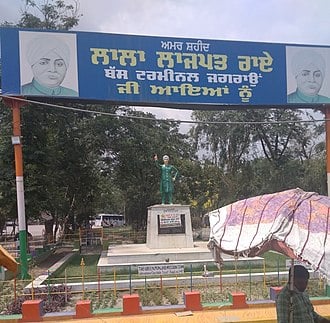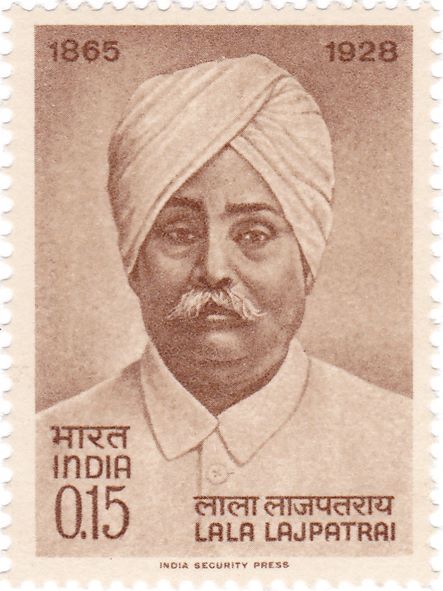Lala Lajpat Rai Age, Death, Wife, Children, Family, Biography & More
| Bio/Wiki | |
|---|---|
| Name Earned | Punjab Kesari [1]Hindi Bhaskar |
| Profession(s) | • Author • Freedom fighter • Politician |
| Famous for | Leading a protest march against the all-British Simon Commission in 1928 |
| Physical Stats & More | |
| Eye Colour | Black |
| Hair Colour | Grey |
| Career | |
| Organisations Founded | • Hindu Mahasabha • All India Trade Union Congress • Servants of the People Society |
| Party | Indian National Congress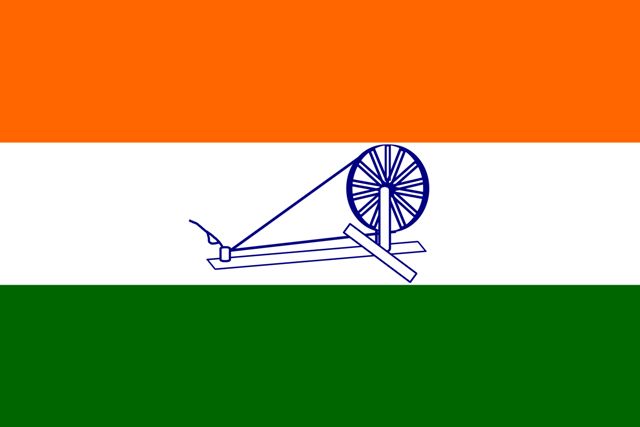 |
| Personal Life | |
| Date of Birth | 28 January 1865 (Saturday) |
| Birthplace | Dhudike, Ludhiana district, Punjab, British India (present-day Punjab, India) |
| Date of Death | 17 November 1928 |
| Place of Death | Lahore, Punjab, British India (present-day Punjab, Pakistan) |
| Age (at the time of death) | 63 Years |
| Death Cause | Injuries sustained during a lathi charge [2]Jagran Josh |
| Zodiac sign | Aquarius |
| Nationality | British Indian |
| Hometown | Jagraon, Ludhiana district, Punjab |
| School | Government Higher Secondary School, Rewari, Punjab province |
| College/University | • Government College University Lahore (GCUL) • Government Higher Secondary School, Rewari |
| Educational Qualification(s) | • School education at Government Higher Secondary School, Rewari, Punjab province • 1880: Studied Law at Government College University Lahore (GCUL) [3]Jagaran News |
| Caste | Agarwal Jain [4]Hindustan Times |
| Relationships & More | |
| Marital Status (at the time of death) | Married |
| Marriage Date | Year, 1877 |
| Family | |
| Wife | Radha Devi Agarwal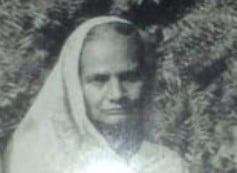 |
| Children | Son- Pyarelal Agrawal and Amrit Rai Agrawal Daughter- Parvati Agrawal |
| Parents | Father- Munshi Radha Krishan Agrawal (Urdu and Persian teacher at a government school) Mother- Gulab Devi Agarwal |
| Siblings | Brother- Lala Dhanpat Rai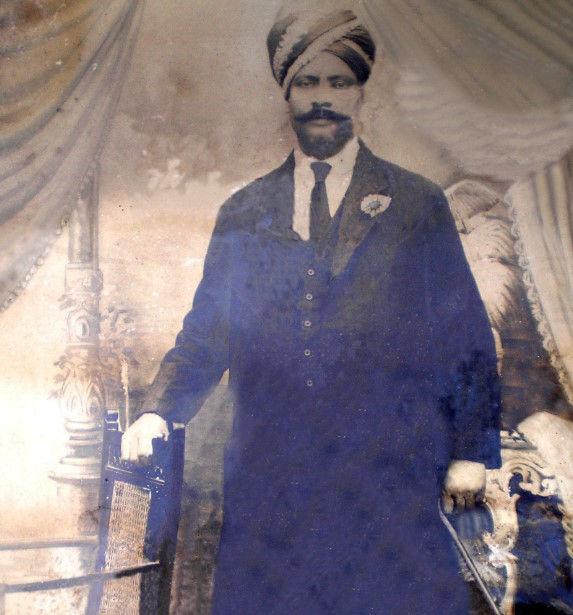 |
Some Lesser Known Facts About Lala Lajpat Rai
- Lala Lajpat Rai was an Indian freedom fighter. He was also an acclaimed author and a politician. In the Indian independence movements, he played an important role and is popularly known as Punjab Kesari or the Lion of Punjab. He was one of the members of the popular triumvirate Lal Bal Pal, which stands for Lala Lajpat Rai, Bal Gangadhar Tilak, and Bipin Chandra Pal during India’s struggle for freedom. In 1894, he was one of the founding members of the Punjab National Bank and Lakshmi Insurance Company. In 1928, Lala Lajpat Rai led a peaceful campaign against the all-British Simon Commission, and during this protest, Britishers lathi-charged the protesters. Lala Lajpat Rai sustained severe injuries during the lathi charge by police and died after a few weeks.
- In the 1870s, the father of Lala Lajpat Rai was an Urdu teacher at Government High Secondary School, Rewari, Punjab province, where Lala Lajpat Rai finished his school studies.
- Lala Lajpat Rai started studying Law at Government College, Lahore in 1880. While studying in Lahore, he came in contact with Indian freedom fighters such as Lala Hans Raj and Pandit Guru Dutt. During the same period, the Hindu reformist movement of Swami Dayanand Saraswati influenced Lala Lajpat Rai to become a member of the Arya Samaj Lahore, which was founded in 1877. Soon, he also joined the Arya Gazette as its founder-editor.
- Soon after finishing his studies at Lahore college, Lala Lajpat Rai moved to Rohtak along with his father. His father was then transferred to Hisar in 1886, where Lala Lajpat Rai began practising Law. In Hisar, Lala Lajpat Rai, along with Babu Churamani, founded the Bar council of Hisar. The Hisar district branch of the Indian National Congress and Arya Samaj was also founded by him along with Babu Churamani, who was a lawyer, three Tayal brothers (Chandu Lal Tayal, Hari Lal Tayal, and Balmokand Tayal), Dr Ramji Lal Hooda, Dr Dhani Ram, Murari Lal (Arya Samaj Pandit), Seth Chhaju Ram Jat (founder of Jat School, Hisar), and Dev Raj Sandhir.
- Lala Lajpat Rai, along with Babu Churamani, Lala Chhabil Das, and Seth Gauri Shankar, attended the annual session of the Congress at Allahabad as the four delegates from Hisar in 1888 and 1889. He shifted to Lahore in 1892 to practice law at the Lahore High Court. During the same period, he also practised journalism and started writing for renowned newspapers of Punjab such as The Tribune. In 1886, the nationalistic Dayananda Anglo-Vedic School in Lahore was established by Mahatma Hansraj, and Lala Lajpat Rai helped him to establish this school.
- Lala Lajpat Rai quit practising law in 1914 to participate in the Indian independence movement. Soon after quitting law, he moved to Britain. The Arya Samaj and communal representation were the two crucial factors that impacted the early freedom struggle of Lala Lajpat Rai.
- Later, he joined the Indian National Congress and started participating in the political agitation in Punjab. Once, the Britishers deported him to Mandalay, but he was soon released due to insufficient evidence. In 1907, his supporters tried to elect him as the party president at Surat but did not succeed. Soon, Lala Lajpat Rai founded a group of alumni at National College in Lahore; revolutionary Indian freedom fighter Bhagat Singh was also a part of this alumni.
- Lala Lajpat Rai held a protest against the Jallianwala Bagh massacre in Punjab in 1919.
- In 1920, Lala Lajpat Rai was appointed as the President of the Indian National Congress in the Calcutta Special Session. In Lahore, a non-profit welfare organisation named Servants of the People Society was established by Lala Lajpat Rai in 1921. After 1947, this organisation was shifted to Delhi, and later, several other branches of this organisation were established in many parts of India.
- In his view, lower caste people should be allowed to read and recite Vedas and their mantras. In one of his writings, Lala Lajpat Rai commented on the caste system and the position of women in India. He wrote,
Hindu society needs to fight its own battle with the caste system, the position of women and untouchability.”
- From 1917 to 1920, he stayed in the United States, where he found the Indian Home Rule League of America in New York. During his stay in the United States, Lala Lajpat Rai met the Sikh communities living along the Western Seaboard. He also visited Tuskegee University in Alabama and met the Philippines workers. During this period, Lala Lajpat Rai wrote a book about his travelling titled The United States of America. In this book, Lala Lajpat Rai mentioned his experiences in America along with the quotations of African American intellectuals such as W.E.B. Du Bois and Fredrick Douglass. The Indian Home Rule League in New York City was founded by him during this period. The Young India and Hindustan Information Services Association was also established by Lala Lajpat Rai at this time.
- During his participation in the Indian freedom struggle, once, Lala Lajpat Rai filed a petition in the United States House Committee on Foreign Affairs against the maladministration by British Rule in India, and he mentioned the aspirations of Indians for independence from colonial rule. This petition of 32 pages was strongly supported by various international communities, which sought the freedom of India. This petition was written in one night, and in October 1917, it was discussed in the U.S. Senate. It argues,
the notion of “color-caste,” suggesting sociological similarities between race in the US and caste in India.”
- In 1919, Lala Lajpat Rai returned to India after the First World War. In 1920, he led a special Indian National Congress party session that helped in leading the non-co-operation movement in Punjab. Lala Lajpat Rai was detained by the Britishers from 1921 to 1923. Soon after his release, he was elected to the legislative assembly.
- In 1920, Lala Lajpat Rai established the first educational institute, R.K. High School, in his hometown, Jagraon.
- In 1922, soon after the Chauri-Chauri incident, Mahatma Gandhi set back the non-cooperation movement, and Gandhi’s decision was strongly opposed by Lala Lajpat Rai. Later, Rai wanted to form another party named the Congress Independence Party.
- The United Kingdom initiated the Simon Commission in 1928. Sir John Simon was the head of the Simon Commission, which was set up to report on the political situations in India. Various Indian political parties boycotted this commission as it did not include any Indian members. Several protests and campaigns were held all over India to oppose the same. On 30 October 1928, the Commission visited Lahore following which Lala Lajpat Rai initiated a peaceful march to protest against it along with the slogan “Simon Go Back!” Several protesters participated in the march and chanted the slogans along with black flags. Consequently, James A. Scott, the police superintendent in Lahore, ordered the police to lathi charge the protesters. During the protest, the police personally assaulted Lala Lajpat Rai. Lala Lajpat Rai was severely injured in the attack, and he addressed the crowd,
The Government which attacks its own innocent subjects has no claim to be called a civilized government. Bear in mind, such a government does not survive long. I declare that the blows struck at me today will be the last nails in the coffin of British rule in India.”
- On 17 November 1928, Lala Lajpat Rai died a few weeks after the lathi charge. The doctors declared that he died due to the injuries that he suffered during the lathi charge. Later, the issue was raised in the British Parliament, and the government denied any role in Lala’s death. Soon after the verdict, Bhagat Singh, who was a witness to the incident, swore to take revenge for Lala Lajpat Rai’s death. Bhagat Singh was an HSRA revolutionary, who, along with Shivaram Rajguru, Sukhdev Thapar, and Chandra Shekhar Azad plotted a plan to kill Scott and send a message to the British government. However, during the execution of the plan, they killed John P. Saunders, an assistant superintendent of the Lahore Police, by mistake. On 17 December 1928, Rajguru and Bhagat Singh shot John P. Saunders when he was on his way to the District Police Headquarters in Lahore. During the shooting, a head constable named Chanan Singh was injured by Azad’s covering fire. Chanan Singh was chasing them after they shot John P. Saunders. This incident led Bhagat Singh and his fellow revolutionaries of the Hindustan Socialist Republican Association under retribution.
- The movements led by Lala Lajpat Rai were the Indian Nationalist Movement, the Indian independence movement led by the Indian National Congress, Hindu reform movements, and Arya Samaj. He filled the spirits of young men of his generation with patriotism through his writings and activism. Chandrasekhar Azad and Bhagat Singh, the young revolutionary freedom fighters of India, were Rai’s followers.
- In the early twentieth century, Lala Lajpat Rai founded various renowned organisations such as Arya Gazette at Lahore, Hisar Congress, Hisar Arya Samaj, Hisar Bar Council, and National DAV Managing Committee. During this period, he was the president of the Lakshmi Insurance Company, which he established in the Lakshmi Building in Karachi. In 1956, this Lakshmi Insurance Company merged with Life Insurance Corporation of India when the nationalisation of the Life Insurance business took place in India.
- Lala Lajpat Rai established a tuberculosis hospital named Gulab Devi Chest Hospital for women in Lahore in the memory of his mother, where Gulab Devi died of tuberculosis in 1927. This hospital was integrated and opened on 17 July 1934. With the passage of time, Gulab Devi Memorial hospital is considered the biggest hospital in Pakistan, which serves over 2000 patients at a time.
- After 1947, a statue of Lala Lajpat Rai, which was earlier established in Lahore, was shifted to the central square in Shimla.
- In 1959, on his centenary birth celebration, the Lala Lajpat Rai Trust was formed by a group of Punjabi philanthropists including R.P Gupta and B.M Grover, who belonged to Maharashtra, India. Later, this trust started the Lala Lajpat Rai College of Commerce and Economics in Mumbai.
- Later, in Meerut, Lala Lajpat Rai Memorial Medical College was named after Lala Lajpat Rai to honour his sacrifices during India’s struggle for freedom.
- Several renowned educational institutions, libraries, bus terminals, and roads are named after Lala Lajpat Rai in India.
- In 1998, in Moga, Lala Lajpat Rai Institute of Engineering and Technology was established after his name.
- In 1929, an Indian silent film titled Punjab Kesari (or The Lion of Punjab) was released; the film was based on the life of Lala Lajpat Rai, and this film was directed by Homi Master. The Indian filmmaker Bhalji Pendharkar released a film titled Vande Mataram Ashram in 1927, and this film portrayed the characters of Lala Lajpat Rai and Madan Mohan, who opposed the western education system in India, which was introduced by Britishers, but the film was banned by the British Government’s regional film censorship board. Later, K. Viswanath directed a documentary film based on Lala Lajpat Rai’s life journey, and this film was produced by the Indian Government Films Division.
- Later, the Government of India issued a fifteen paise stamp in the name of Lala Lajpat Rai.
- Apart from being a revolutionary freedom fighter, Lala Lajpat Rai was an acclaimed author, who often used to contribute to several Hindi, Punjabi, English, and Urdu newspapers. He was the founder of Arya Gazette. In 1908, he published ‘The Story of My Deportation,’ and in 1915, he released the book ‘Arya Samaj.’ His other books written by him include The problem of National Education in India (1920), Unhappy India (1928), and England’s Debt to India (1917). The name of Lala Lajpat Rai’s autobiography is Young India: An Interpretation and a History of the Nationalist Movement from Within, which he published in 1916. Later, an Indian author named B.R. Nanda edited Lala Lajpat Rai’s works and wrote a book titled The Collected Works of Lala Lajpat Rai. The biographies of Mazzini, Garibaldi, Shivaji, and Shrikrishna were also written by Lala Lajpat Rai.
- Lala Lajpat Rai was an avid reader. Reportedly, Rai was impressed by the patriotic and nationalistic writings of an Italian revolutionary leader named Giuseppe Mazzini.
- Bipin Chandra Pal, Aurobindo Ghosh, and Bal Gangadhar Tilak together advocated against the negative aspects of modern political rules adopted by several leaders of the Indian National Congress during India’s struggle for independence.
- Lala Lajpat Rai is considered one of those leaders in India who always tried to strengthen Hindu-Muslim unity in India.
I do honestly and sincerely believe in the necessity or desirability of Hindu-Muslim unity. I am also fully prepared to trust the Muslim leaders. But what about the injunctions of the Koran and Hadis? The leaders cannot over-ride them. Are we then doomed? I hope not. I hope your learned mind and wise head will find some way out of this difficulty.” – Lala Lajpat Rai
References/Sources:

